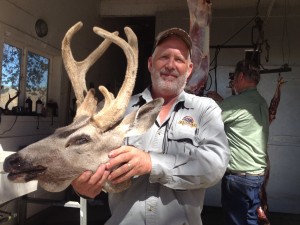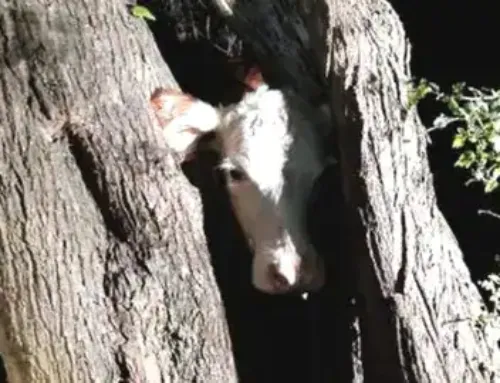Have you ever seen a buck in velvet well past September, maybe into November or December, or even with velvet antlers still intact in spring or summer?
Commonly called a “stag,” the oddball buck exhibits unusual antler growth and retains velvet on the antlers due to low testosterone levels.
Scientists refer to this condition as cryptoridism, and it’s rare. It can result from a birth defect or disease that causes a buck’s testicles (one or both) not to drop normally. Or, a buck may injure his privates, say on a wire fence (ouch). Cryptorchidism can occur in whitetails, blacktails (picture above) or mule deer (below).
A stag buck is different, and he doesn’t engage in the seasonal rituals of normal bucks. Cryptorchids don’t rub or scrape as the rut approaches. They lack the chemical stimulation to express dominance or individualism. Their necks don’t swell and they don’t breed. Reproductively, they are stuck in neutral.
A stag doesn’t shed his antlers; they remain in velvet year-round. The fuzzy antlers can continue to grow as the animal matures. Older-age-class cryptorchids can grow to become true freaks, known as “cactus bucks.”
If you see a stag in the woods, take him, you’ll have a rare and interesting trophy. Big Deer TV producer Justin Karnopp did just that one day last fall, and you’ll see the hunt on a new episode of my show later this summer on Sportsman Channel.







